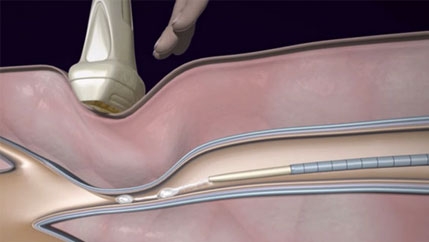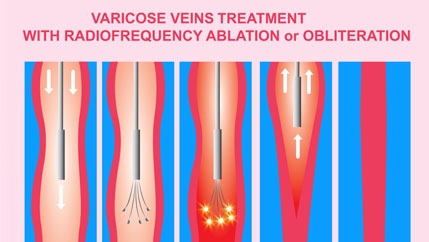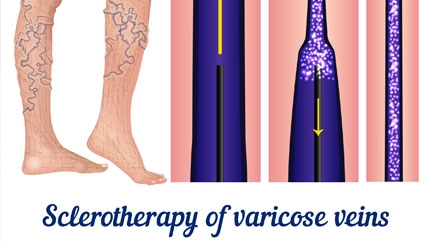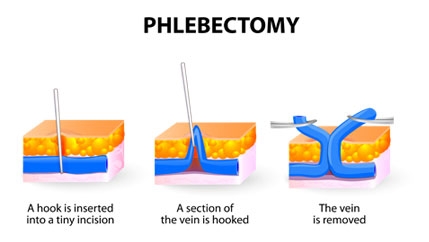Treatment Options
At the McLeod Vein Center, the first step in the assessment process is a consultation with a vascular specialist. In most cases, this includes a simple, painless ultrasound examination to determine whether you need noninvasive or more advanced treatment options. Some of these noninvasive remedies include: exercising, elevating your legs whenever possible, losing weight if you are overweight, wearing compression stockings or advanced compression therapy.
Today’s cutting-edge technology offers safe and effective ways to treat venous disease, often without major surgery. Some of these in-office treatments include: closing the vein with radio frequency energy or a laser through a simple needle access; injecting the veins with a medicine to close the vein down; or removing the diseased vein. Patients should discuss with their vascular specialist which of these therapies would be best for their case. Scroll down the page for more details on safe, effective treatments.
Click here to find a vascular specialist.
Or call (843) 777-7043 to schedule an appointment.
-

VenaSeal
VenaSeal treats venous reflux disease using an advanced medical adhesive to seal and permanently close the diseased vein. The blood is re-routed through nearby healthy veins. This procedure reduces the chronic need for compression stockings. Patients can expect minimal-to-no bruising post procedure and a return to normal activities on the same day. McLeod Vascular Associates was the first in the state to perform this procedure.
-

Radiofrequency Closure
Radiofrequency Closure is a treatment for Chronic Venous Disease and can be performed in the physician’s office. Through a tiny catheter inserted into the diseased vein, radiofrequency energy is delivered to the vein wall. As the energy is delivered, the vein wall is heated, causing the collagen in the wall to shrink and the vein to close. Once closed, the blood will re-route itself to healthier veins. Patients who undergo the Closure procedure can resume normal activity the same day. Most notice an improvement in their symptoms within a few days.
-

Sclerotherapy
Sclerotherapy is the method for treating spider veins and small varicose veins. Using a fine needle, a medicine is injected into the vein causing a chemical irritation of the inside lining, which closes down the vein. Over the next several weeks to months, the vein fades away.
-

Ambulatory Phlebectomy
Ambulatory Phlebectomy is the procedure where hooks are used to pull the diseased vein out of the leg through tiny cuts made in the skin. Very large varicose veins can be removed with this method leaving only tiny scars.
-
McLEOD REGIONAL MEDICAL CENTER FLORENCE
843-777-2000 -
McLEOD DARLINGTON
843-777-1100 -
McLEOD DILLON
843-774-4111 -
McLEOD LORIS
843-716-7000 -
McLEOD SEACOAST
843-390-8100 -
McLEOD CHERAW
843-537-7881 -
McLEOD CLARENDON
803-433-3000



-
McLEOD REGIONAL MEDICAL CENTER FLORENCE
843-777-2000 -
McLEOD DARLINGTON
843-777-1100 -
McLEOD DILLON
843-774-4111 -
McLEOD LORIS
843-716-7000 -
McLEOD SEACOAST
843-390-8100 -
McLEOD CHERAW
843-537-7881 -
McLEOD CLARENDON
803-433-3000
 Find a Doctor
Find a Doctor  Locations
Locations  Services
Services